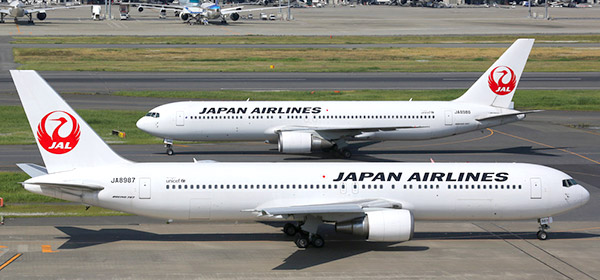When checking in at Sydney Airport for my Japan Airlines flight to Tokyo, I was tempted by the offer of a $350 upgrade to Premium Economy but decided to see what Economy had to offer first.
Economy
And I’m glad I did. There’s a certain zen atmosphere when travelling with Japan Airlines – no rush to get on the plane, patience when waiting for passengers to find their seat and put their baggage overhead. And all this before I realise that the legroom of my Economy seat seems far greater than any other international airline on which I’ve flown. Okay, so at 5’ 5” I’m not exactly the jolly green giant but I have sat on plenty of airplane seats where I felt my knees were up at my ears. I could go into seat pitch and other technical jargon, but suffice to say, my knees don’t even touch the back of the seat in front.
With the added bonus of a spare seat next to me, the 10-hour flight seems, all of a sudden, bearable. So I settle down to watch my list of chosen movies and have the odd nap – I’m not a great sleeper on flights.
The food is standard airline fare – tasty enough but nothing to write home about. However, snacks and drinks are easily accessible and I’m not in any danger of leaving the flight hungry.
Premium Economy
On the return leg, which is an overnight flight, I decide that I will treat myself to the upgrade, largely due to a tight connection at the other end – I figure the closer I am to the front, the quicker I get to disembark.
It’s the same deal on the return, although with the exchange rate it works out to be about $378 to upgrade. Depending on your original Economy fare, you may or may not receive lounge access for this price. If not, then an additional $70 will get you inside. This may seem a little steep, but when you factor in that Narita Airport is particularly busy; doesn’t have many restaurants or bars (plenty of shopping though), and what is available isn’t exactly cheap – you can pay about $30 for a bowl of udon noodles and a soft drink – suddenly the $70 doesn’t seem such a ridiculous amount to pay.
Thankfully there is no mad rush to get on the flight, as travelling Premium Economy doesn’t get you on the flight any sooner. The seats are slightly larger than Economy, but to be honest, the legroom is fairly similar. The seats recline within their own shell, so there’s no one in front invading your space and the screens are slightly larger, with the same entertainment options as Economy. The seats have a decent reclining position, with a footrest that can be extended. It’s not quite a lie-flat Business Class bed, but for an overnight flight, it’s nice to be able to be able to have your legs supported when elevated.
There are a few extras, however, that tickle me – one being able to use the same loos as those in Business Class. Now, you may think a loo is a loo, but not on Japan Airlines. These ones not only have additional toothbrushes and sachets of mouthwash, they also have the sound of running water so no-one standing outside can hear you going about your business. They’re also a little larger, which is great for when you decide to change into something more comfortable for your flight or put on fresh clothes before you arrive at your destination.
Also, you are given a toothbrush (just in case the ones in the loos run out) and an Express Exit pass to get you through security quicker, which is ideal for my tight connection between Sydney and Melbourne.
So, is it worth the extra to fly Premium Economy?
To be honest, I’ve always been a little a skeptical about the value of Premium Economy but with my flight passing in what seems like half the 10-hour allotted flying time, there has to be something in paying that little extra.
Economy fares from Sydney to Tokyo start at around $850, with Premium Economy from $1944, so if you’re not too fussed about which class you travel in, an airport upgrade is a cost-effective option to be able to fly near the front of the airplane.
Debbie travelled in Economy courtesy of Japan National Tourism Organisation (JNTO)
Find your flights at JAL.com

